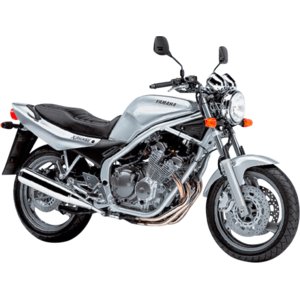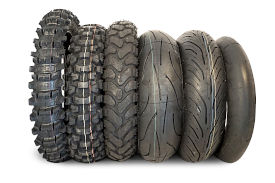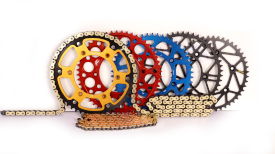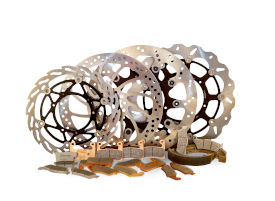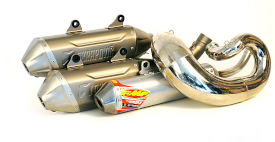Yamaha XJ 600 N [1994–1997] Review: The Approachable Inline-Four That Defined an Era
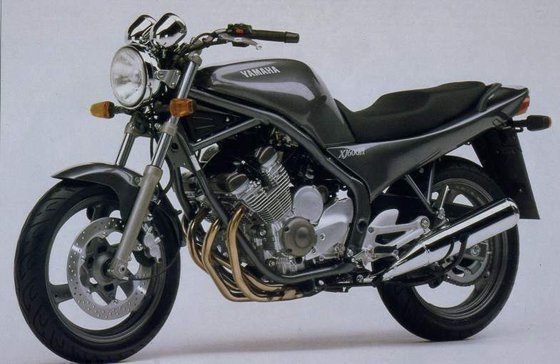
Introduction
The Yamaha XJ 600 N stands as a testament to 1990s motorcycle engineering – a harmonious blend of practicality, reliability, and just enough sporty character to keep things interesting. Designed during an era when naked bikes began dominating urban landscapes, this air-cooled inline-four carved its niche as a versatile companion for both daily commutes and weekend adventures. Let’s dissect why this machine remains a beloved choice for riders seeking an unfiltered, analog motorcycling experience.
Design & First Impressions
At first glance, the XJ 600 N exudes understated confidence. Its double-cradle steel frame supports a compact, muscular silhouette, with the 38mm telescopic forks and monoshock rear suspension hinting at balanced dynamics. The 770mm (30.3-inch) seat height feels welcoming for riders of varying statures, while the 193 kg (425 lb) dry weight – manageable even at parking speeds – masks its heft once in motion.
The minimalist bodywork showcases Yamaha’s focus on function over frivolity. The round headlight, analog gauges, and exposed engine components give it a timeless, "honest motorcycle" aesthetic. Practical touches like the 17L (4.4-gallon) fuel tank and upright riding position prioritize real-world usability, though the lack of wind protection becomes apparent above 100 km/h (62 mph).
Engine & Performance
The Heart of the Matter
The 599cc DOHC inline-four engine is where the XJ 600 N truly shines. Generating 61 HP (45 kW) at 8,500 RPM and 53–65 Nm (39–48 lb-ft) of torque depending on model year, this air-cooled mill delivers linear power delivery that’s forgiving for newcomers yet engaging for seasoned riders.
Cold starts require patience – the 28mm Mikuni carburetors demand proper choke technique – but once warmed to its 1,200 RPM idle, the engine settles into a smooth, turbine-like hum. Throttle response remains crisp through the midrange, with a noticeable surge around 6,000 RPM as the exhaust note transitions from bassy growl to metallic wail.
The 6-speed gearbox shifts with mechanical precision, though finding neutral at standstill can be finicky. Chain final drive maintenance is straightforward, and the 16/48 sprocket combination strikes a balance between acceleration and highway cruising. At 120 km/h (75 mph), the engine hums along comfortably at ~5,500 RPM in sixth gear, though vibrations through the bars and pegs intensify past 140 km/h (87 mph).
Handling & Ride Dynamics
Yamaha nailed the chassis geometry here. The 25° rake and 97mm (3.8-inch) trail provide stable yet responsive steering, while the 1,445mm (56.8-inch) wheelbase inspires confidence during high-speed sweepers. The non-adjustable 38mm forks and preload-adjustable monoshock handle city potholes admirably, though aggressive cornering reveals their limitations – the front end dives noticeably under hard braking, and the 140mm/110mm (5.5"/4.3") suspension travel struggles with sharp mid-corner bumps.
Braking performance aligns with era expectations. The single 320mm front disc with twin-piston caliper requires a firm squeeze for urgent stops, while the 245mm rear disc offers progressive feel. Modern radial tires (110/80-17 front, 130/70-18 rear) dramatically improve grip over period-specific rubber.
Comfort & Practicality
The XJ 600 N’s true strength lies in its everyday usability. The bench-style seat provides ample room for rider movement, though its foam density leads to numb butt syndrome after 90 minutes. The neutral riding triangle – low pegs, wide bars, and neutral spine angle – works brilliantly for urban crawls, with vibration dampening sufficient for 2-hour highway stints.
Storage options are limited to aftermarket solutions, but the 17L fuel tank delivers ~300 km (186-mile) range at a claimed 18.1 km/L (42.6 mpg). The lack of a fuel gauge (only a reserve switch) requires old-school trip meter discipline.
Competition
In the mid-90s middleweight naked arena, the XJ 600 N faced formidable rivals:
- Honda CB600F Hornet: More modern liquid-cooled engine (1998+), sharper handling, but heavier and less accessible for DIY maintenance.
- Suzuki GSX600F Katana: Sportier ergonomics and fairing, but cramped for taller riders and pricier to insure.
- Kawasaki Zephyr 550: Retro charm and bulletproof reliability, though down on power and lacking the XJ’s sixth gear.
Where the Yamaha excelled was in its mechanical simplicity. The air-cooled engine avoided radiator complexities, while the tubular steel frame made crash repairs economical. For riders valuing approachable performance over cutting-edge specs, the XJ 600 N often came out on top.
Maintenance
Here’s where the XJ 600 N truly earns its stripes as a MOTOPARTS.store favorite:
Key Service Points
- Valve Adjustments: Every 6,000 km (3,700 miles). Cold clearance specs:
- Intake: 0.11–0.15mm (0.0043–0.0059")
-
Exhaust: 0.21–0.25mm (0.0083–0.0098")
Pro Tip: Use MOTOPARTS.store’s Shim Kit YS-600 for precise adjustments. -
Carb Sync & Cleaning: Annual service recommended. Our Mikuni BST28 Rebuild Kits restore throttle response.
-
Oil Changes: 2.5L with filter (SAE 20W-40). Consider MOTOPARTS.store’s Synthetic Blend for reduced top-end noise.
-
Chain Maintenance: 110-link DID 525VX2 chains paired with our Lubricant Pro+ extend service intervals.
-
Brake System: Annual DOT4 fluid flush prevents master cylinder issues. Upgrade to MOTOPARTS.store’s Sintered Pads for improved bite.
Common Upgrades
- NGK CR8EIX Iridium Plugs: Smoother cold starts
- Progressive Fork Springs: Reduces dive under braking
- Gel Seat Conversion: For marathon rides
Conclusion
The Yamaha XJ 600 N isn’t about chasing spec sheets – it’s about the joy of riding a motorcycle that communicates through handlebars and seat-of-the-pants feedback rather than digital displays. While modern bikes outpace it in every performance metric, few deliver the same mechanical satisfaction and owner-accessible engineering.
For riders seeking an affordable entry into inline-four ownership or a blank canvas for customization, this 90s workhorse remains relevant. And when maintenance time comes, remember – MOTOPARTS.store has every gasket, bearing, and upgrade to keep your XJ 600 N running like a Swiss watch for decades to come.
Whether you’re restoring a barn find or optimizing a daily rider, explore our curated XJ 600 N parts collection to make your Yamaha uniquely yours.
Specifications sheet
| Engine | |
|---|---|
| Stroke: | Four-stroke |
| Ignition: | Transistor |
| Max power: | 45 kW | 60.0 hp |
| Max torque: | 66 Nm |
| Fuel system: | 4x Mikuni BDS28 downdraft carburetors |
| Lubrication: | Wet sump |
| Max power @: | 8500 rpm |
| Displacement: | 599 ccm |
| Max torque @: | 7000 rpm |
| Configuration: | Inline |
| Compression ratio: | 10:1 |
| Number of cylinders: | 4 |
| Dimensions | |
|---|---|
| Wheelbase: | 1445 mm (56.8 in) |
| Dry weight: | 193 |
| Seat height: | 770 mm (30.3 in) |
| Overall width: | 770 mm (30.3 in) |
| Overall height: | 1205 mm (47.4 in) |
| Overall length: | 2170 mm (85.4 in) |
| Ground clearance: | 150 mm (5.9 in) |
| Fuel tank capacity: | 17 L (4.4 US gal) |
| Drivetrain | |
|---|---|
| Final drive: | chain |
| Gear Ratios: | {'1st': '2.733', '2nd': '1.778', '3rd': '1.333', '4th': '1.074', '5th': '0.913', '6th': '0.821'} |
| Chain length: | 110 |
| Transmission: | 6-speed |
| Rear sprocket: | 48 |
| Front sprocket: | 16 |
| Performance | |
|---|---|
| Top speed: | 178.6 km/h (111 mph) |
| Standing ¼ Mile: | 13.5 sec @ 149.2 km/h (92.7 mph) |
| Maintainance | |
|---|---|
| Rear tire: | 130/70-18 |
| Engine oil: | 20W40 |
| Front tire: | 110/80-17 |
| Break fluid: | DOT 4 |
| Spark plugs: | NGK CR8E or NGK CR8EIX |
| Spark plug gap: | 0.7–0.8 mm |
| Forks oil capacity: | 0.758 |
| Engine oil capacity: | 2.5 |
| Engine oil change interval: | Every 5000km or 2 years, whichever comes first |
| Valve clearance (intake, cold): | 0.11–0.15 mm |
| Valve clearance check interval: | 24,000 km |
| Valve clearance (exhaust, cold): | 0.21–0.25 mm |
| Recommended tire pressure (rear): | 2.5 bar (36 psi) solo, 2.8 bar (41 psi) with passenger |
| Recommended tire pressure (front): | 2.25 bar (33 psi) |
| Chassis and Suspension | |
|---|---|
| Rake: | 25° |
| Frame: | Double cradle |
| Trail: | 97 mm (3.8 in) |
| Rear brakes: | Single 245mm disc, 1-piston caliper |
| Front brakes: | Single 320mm disc, 2-piston caliper |
| Rear suspension: | Monocross monoshock adjustable for preload |
| Front suspension: | 38mm Telescopic forks, no adjustment |
| Rear wheel travel: | 110 mm (4.3 in) |
| Front wheel travel: | 140 mm (5.5 in) |



